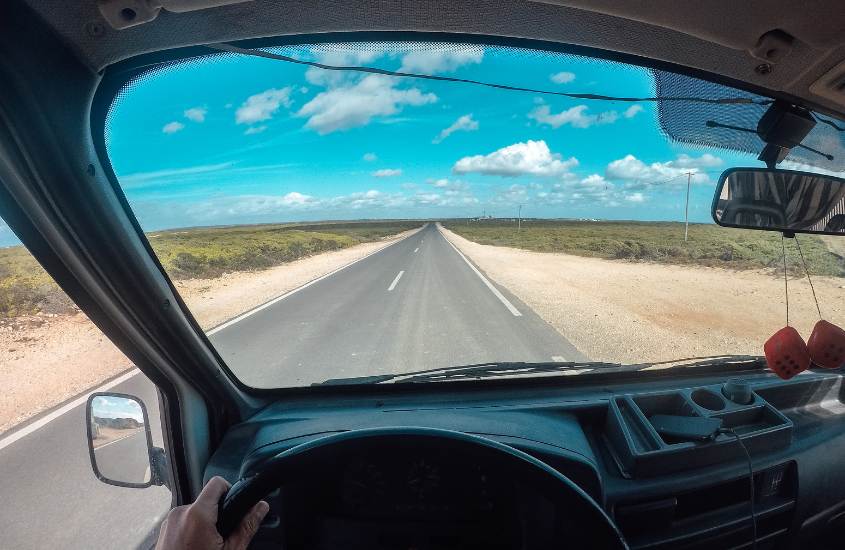Understanding Portugal’s Road Rules
Driving in Portugal offers a unique experience shaped by its distinct road rules and driving culture. Portugal follows European Union regulations, so if you’re familiar with EU driving norms, you’ll find much to be familiar. However, some local rules and customs might be new to you. It’s essential to understand these rules to ensure a safe and enjoyable driving experience.
Speed limits in Portugal are strictly enforced. On highways, the maximum speed is usually 120 km/h, while on rural roads, it’s 100 km/h. In urban areas, the speed limit is generally 50 km/h unless otherwise indicated. Be aware of these limits and always keep an eye out for speed cameras, as fines can be substantial. Additionally, driving under the influence of alcohol is heavily penalized, with strict limits on blood alcohol content.
Navigating Portugal’s Roads and Highways
Portugal’s road network is well-maintained and offers various routes for travelers. Major highways, or ‘autoestradas,’ connect the country’s key cities and regions, providing smooth and efficient travel. These highways are toll roads, so be prepared to pay tolls, which can be done at toll booths or through electronic payment systems.
For a scenic drive, consider exploring Portugal’s national roads or ‘estradas nacionais.’ These roads pass through picturesque landscapes, charming villages, and historic sites. They offer a more leisurely pace compared to highways, allowing you to immerse yourself in the beauty of Portugal’s countryside.
Dealing with Portuguese Road Signs and Signals
Understanding Portuguese road signs and signals is crucial for safe driving. While many signs are similar to those in other European countries, some are unique to Portugal. Familiarize yourself with common signs like ‘Stop,’ ‘Yield,’ and speed limit indicators. Road signs often include both Portuguese and international symbols, making them easier to interpret.
In Portugal, roundabouts are prevalent, and the rule is to yield to traffic coming from the left. This can be different from what you’re used to, so approach roundabouts with caution. Additionally, pedestrian crossings are well-marked, and drivers are expected to stop for pedestrians at these crossings. For more detailed information on driving in Portugal, Read More.

Parking and Driving Etiquette
Parking regulations in Portugal are strictly enforced, especially in urban areas. Look for marked parking spaces and avoid parking in areas designated for residents or where signs indicate restrictions. In cities like Lisbon and Porto, parking can be challenging, so consider using public transportation or parking in designated lots.
Portuguese drivers are generally courteous, but be prepared for some aggressive driving in busy areas. It’s common for drivers to use their horns, especially when overtaking or signaling their intentions. Keep calm and stay alert to ensure a smooth driving experience.
Exploring Scenic Routes and Destinations
Portugal boasts several scenic driving routes that offer breathtaking views and unique experiences. The Algarve coast, with its stunning beaches and dramatic cliffs, is a popular destination. The Douro Valley, known for its vineyards and river views, provides a picturesque drive through one of Portugal’s most beautiful regions.
For a historical journey, drive through the central region, where you’ll find medieval towns, ancient castles, and charming architecture. The Sintra region, with its fairy-tale palaces and lush gardens, is another must-visit area that offers a magical driving experience.
Planning Your Trip and Road Safety
Before setting off on your road trip in Portugal, plan your route and ensure your vehicle is in good condition. Check tire pressure, oil levels, and other essential fluids to avoid any issues on the road. If you’re renting a car, make sure you’re familiar with the vehicle’s features and controls.
Carry essential documents, including your driver’s license, vehicle registration, and insurance information. It’s also a good idea to have a GPS device or smartphone with navigation capabilities. While many road signs are clear, having a GPS can help you navigate unfamiliar areas more easily.
Conclusion: Embracing the Joy of Driving in Portugal
Driving in Portugal offers a wonderful opportunity to explore the country’s diverse landscapes and vibrant cities. By understanding local road rules, navigating effectively, and respecting parking regulations, you’ll ensure a smooth and enjoyable journey. Whether you’re cruising along the coast or winding through historic towns, Portugal’s roads provide an unforgettable driving experience. Embrace the adventure and savor the beauty of Portugal from behind the wheel.


